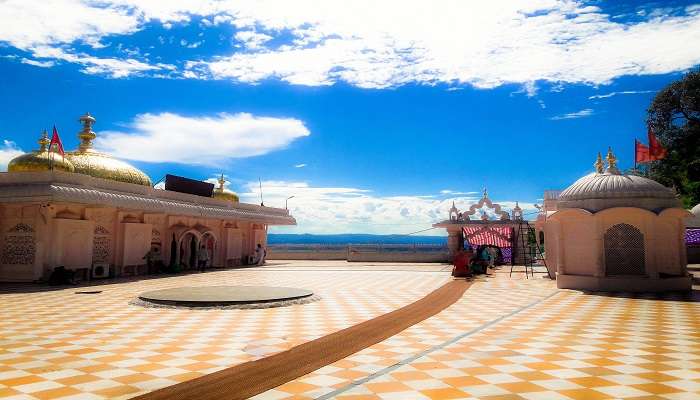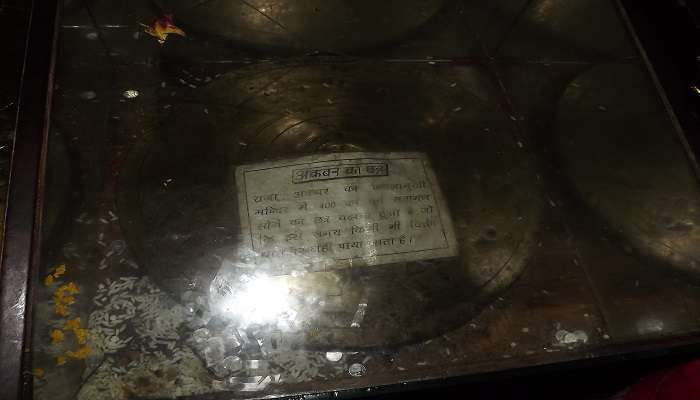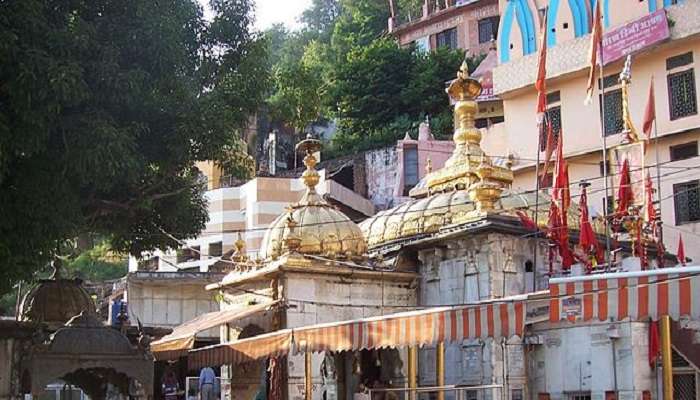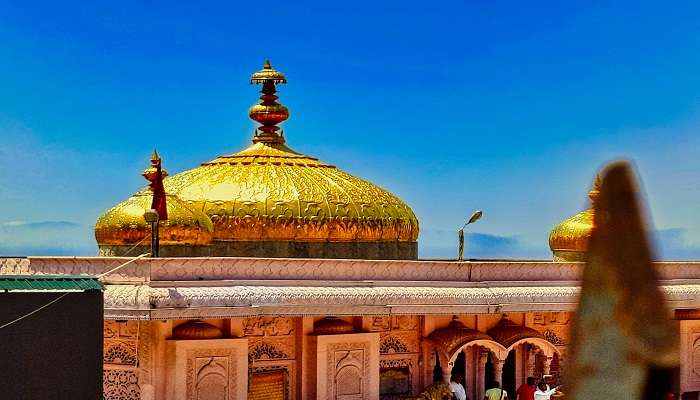Witness The Miraculous Flames Of Jwala Ji Temple In 2026

Jwala Ji Temple is one of the holiest temples in the beautiful Himalayas of India, representing the country’s immense spiritual legacy. It is time to unveil the secrets of such an amazing place and discover the true meaning that empowers people. In Himachal Pradesh, Jwala Ji is often called the Goddess of Light. This temple is located in the Kangra district and holds a lot of spiritual and religious importance in the Hindu culture. This temple is home to the nine flames that are named after the Goddesses- Mahakali, Annapurna, Chandi, Hinglaj, Bindhya Basni, Maha Lakshmi, Saraswati, Ambika and Anji Devi.
The Legend of the Jwala Ji- the Flame Goddess

The story associated with Jwala Ji Temple is as interesting as the flame that burns without being extinguished for centuries. As per Hindu mythology, it is believed that while killing the demon king Hiranyakashipu, Lord Vishnu beheaded the goddess Sati, and her tongue fell into this place. Some non-profane explanations suppose that the deity itself was an endless flame that was supposed to symbolise the power and existence of the goddess in question.
The flames that burn in Jwala Ji Temple are said to have originated from nature and are thus seen as the goddess’s power. Folklore regarding the miracles of Jwala Ji Temple remains known among the people residing in the area. For the people, visiting the Jwala Ji Temple is always considered a trip of faith and devotion.
Also Read: Manali Mall Road
The Architecture of Devotion: Jwala Ji Temple Complex

The premises of the Jwala Ji Temple are well-built and have some architectural significance, leaving culture as the only possible explanation. The comical temple that accommodates the sacred fire is not elaborate; the architectural design amazes one.
Main Temple: The main shrine occupies the centre of the temple complex and contains a flame that never goes out. People perform puja and worship here to receive blessings from the goddess queen.
Other Temples: Other shrines in the complex are associated with the different gods, such as the Shiva temple, the Vishnu temple and the Hanuman temple.
Accommodation: For those who want to spend more time in the temple other than visiting, there are structures within the temple compound where people can be lodged to prepare for a spiritual stay.
The Eternal Flame of Jwala Ji Temple

Science and superstition cannot explain why the flame of Jwala Ji Temple has never been extinguished for hundreds of years. Its occurrence is so pervasive that researchers have endeavoured to uncover its root causes innumerable times, only to be unsuccessful.
The tiny flame is constant and does not require any fuel; it challenges the conventional norms of science and fuels the flame of curiosity in everyone who passes through.
Related Post: Himalaya Nyingmapa Buddhist Temple
The Spiritual Significance of Jwala Ji

Hindus regard the Jwala Ji Temple as a sacred place of worship, and many people come to visit it from around the world. The temple is revered as Shakti Peetha, one of the divine mother’s most important and holiest places of worship.
Pilgrimage and Devotion: The temple, therefore, forms one of the most important centres of worship for many devotees who travel a long distance to pay their respects to the goddess. Their strong belief and commitment can be seen when they pilgrimage, giving the view a solemn feel.
Religious Rituals: Different religious ceremonies and functions are carried out in the temple year-round, which may allow devotees to experience divine blessings.
Meditation and Spiritual Retreats: The temple’s environment is very calm, making the area suitable for meditation and other religious activities. Several meditation centres and ashrams are nearby for guests who want to get a more profound spiritual experience.
Beyond The Temple: Exploring the Surrounds

As for tourism, the main event is the Jwala Ji Temple; however, numerous other attractions are connected to sightseeing and natural landscapes.
- Trekking: Take adventurous treks through the stunning terrains of the Himalayas, which provide an excellent opportunity to observe the region’s serene beauty and fauna.
- Local Markets: Discover the living culture through the markets where fountains, carvings, handwork products, traditional clothes, and local food are available.
- Wildlife Sanctuaries: The area also includes several wildlife sanctuaries, where guests and visitors can observe wildlife of various forms and types, such as birds, mammals, and reptiles.
Related Post: Paragliding In Kullu
Best Time To Visit

Visiting Jwala Ji Temple during India’s winter season is always recommended, from October to March. Accommodation can be selected from hotels and guest houses in the temple’s surroundings or Dharamshala.
You May Also Like To Read: Bhuntar
The temple clearly illustrates how people’s dynamic relationship with the divine and their quest for answers to the unknown endures. Presently, a flame burns perpetually as a sign of divine light, and people worldwide, including seekers, are still coming forward for enlightenment. A visit to this holy place provides a chance to be nearer to the creator, to reflect on one’s faith and life, and to come to seek God. The article under discussion invites readers to go through an incredible change when travelling to Jwala Ji Temple. Get an impression of a spiritual atmosphere, see the flame’s mystery, and feel the power of God. Plan your trip to Himachal Prdseh today to witness the true beauty.
For our editorial codes of conduct and copyright disclaimer, please click here.
Cover Image Credit:Baneesh for wikimedia commons
Frequently Asked Questions About Jwala Ji Temple
Is there an entry fee to visit Jwala Ji Temple?
Admission to the temple complex is normally charged a token fee and those interested are advised to contact the temple administration for this information.
What is the best time to visit Jwala Ji Temple?
This is particularly true for first-time tourists who have gotten a feel of the place – the best time to tour the island is during the winter season from October to March when the climate is perfect for tourism activities.
Are there any accommodation options near the temple?
Yes, there are many Hotels, Guest Houses and dharamshalas near the temple but in the same area of the temple, there is not any big hotel.
Can I take photographs inside the temple?
There can be some specific zones in the territory of the temple, where taking photographs is prohibited. Nothing is more important than to respect the sanctity of the place as well as the others by following the instructions.
What should I pack for a visit to Jwala Ji Temple?
Remember to pack warm clothes, appropriate shoes and other necessities for the duration of your trip.
People Also Read:
Venugopalaswamy Temple Baglamukhi Temple Kaleshwar Mahadev Temple

Get ready to wander the world through amazing visual tours that we provide via our blogs and stories. As a content writer, I love sharing incredible travel experiences that inspire readers to plan their own adventures and create unforgettable memories. From planning to execution, everything has already been served in these amusing tales. Let’s explore the world together, one destination at a time!











